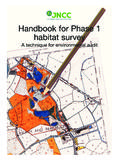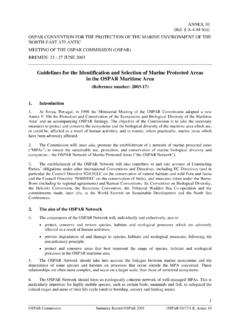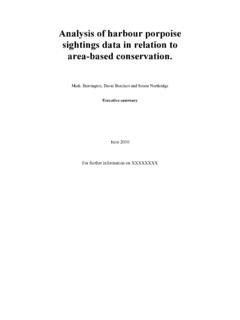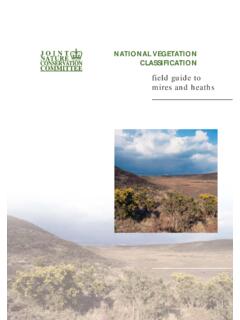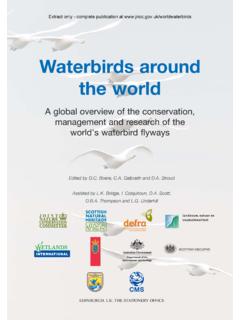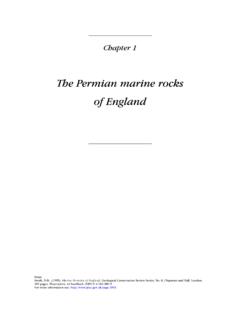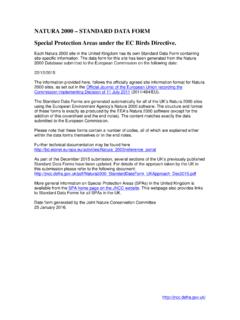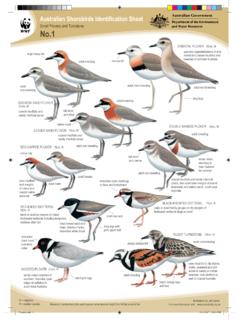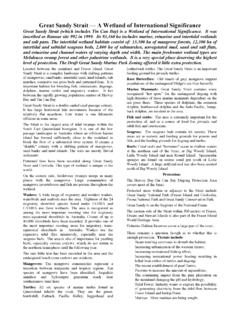Transcription of Waterbirds around the world - Department for …
1 Waterbirds around the worldA global overview of the conservation, management and research of the world 's waterbird flywaysEdited by Boere, Galbraith and StroudAssisted by Bridge, I. Colquhoun, Scott, Thompson and UnderhillEDINBURGH, UK: THE STATIONERY OFFICEE xtract only - complete publication at Scottish Natural Heritage 2006 First published in 2006 by The Stationery Office Limited71 Lothian Road, Edinburgh EH3 9AZ, for reproduction should be made to Scottish Natural Heritage,Great Glen House, Leachkin Road, Inverness IV3 8NW, Library Cataloguing in Publication DataA catalogue record for this book is available from the British LibraryISBN 0 11 497333 4 Recommended citation:Boere, , Galbraith, & Stroud, (eds).
2 around the world . The Stationery Office, Edinburgh, UK. 960 used for geographical entities do not imply recognition, by the organisers of the Waterbirds around the worldconference or othersupporting organisations or governments, of the political status or boundaries of any particular territory. Names of territories used (andany alternatives) are included solely to help users of this publication apply information contained within this volume for waterbird conservation purposes. The views expressed in papers included within this volume do not necessarily represent views of the editorsor the organisations and governments that supported the conference and this photography:Whooper Swans Cygnus cygnusarriving at Martin Mere, England.
3 Photo: Paul Marshall. ( )Copyright of all photographs used in this publication resides with the named only - complete publication at Yellow Sea Region lies between North and South Koreato the east and China to the west, and covers an area of458 000 sq km. Biodiversity in the inter-tidal zone of the YellowSea Region is high: excellent feeding and roosting areas accom-modate many different species of Waterbirds , and preliminaryrecords indicate that the coastal zone of the Yellow Sea eco-region supports about 200 breeding, staging and winteringwaterbird and seabird Yellow Sea eco-region is a very important component ofthe East Asian-Australasian Flyway. It serves as an essentialstaging site for shorebird migration between the south and north:its position is crucial for shorebird migration as it acts as anenergy station due to its large coastal inter-tidal flats.
4 Shorebirdsbreeding in the Russian Far East, northeast China and northernChina can either migrate along the coastline and winter in themiddle and lower Chang Jiang and South China, or continue tofly southward to winter in Southeast Asia, Australia or NewZealand. The northern coast of the Yellow Sea is probably thefinal staging site for many shorebird species flying to theirbreeding order to assess the shorebird resources in the Yellow Seaand to accurately understand the utilization of the region byshorebirds during their northward and southward migration,Wetlands International-China has for the past nine years organ-ized experts to conduct regular field surveys along the most ofthe coasts of the Yellow Sea.
5 A total of 54 shorebird species have so far been found in theYellow Sea during southward or northward migration, of which34 species occurred in internationally important numbers (morethan 1% of its estimated biogeographic population) at one ormore sites. This number represents 60% of the migratory shore-bird species in the East Asian Australasian Flyway. It is esti-mated that at least 2 million shorebirds, approximately 40% ofall migratory shorebirds population in the Flyway, use theYellow Sea Region during northward migration. Large numbersof shorebirds, perhaps exceeding 1 million, also pass throughthis region during southward migration. A total of 14 sites havebeen identified in the Yellow Sea-China coast where at least oneshorebird species has been recorded in internationally importantnumbers.
6 The majority of one globally threatened species, the SpottedGreenshank Tringa guttifer,uses the Yellow Sea for both north-ward and southward migrations, and nine sites have been identi-fied as internationally important for this species. Almost theentire migratory population of five shorebird species uses theYellow Sea: Curlew Sandpiper Calidris ferruginea, Bar-tailedGodwit Limosa lapponica, Eurasian Curlew Numenius arquata,Great Knot Calidris tenuirostrisand Kentish Plover Charadriusalexandrinus. Approximately 80% of the estimated populationof Eastern Curlew Numenius madagascariensisand 40% ofAsian Dowitcher Limnodromus semipalmatuswere representedin the Yellow Sea during northward species occur in internationally important concentra-tions in the southern part of the Yellow Sea during the non-breeding season, the Eurasian Curlew Numenius arquata,Spotted Redshank Tringa erythropus, Common GreenshankTringa nebularia, Sanderling Calidris alba, EurasianOystercatcher Haematopus ostralegus,Pied AvocetRecurvirostra avosettaand Kentish Plover Charadrius alexan-drinus.
7 The Oriental Pratincole Glareola maldivarumbreeds inthe Yellow Sea in internationally important numbers. Based on the analysis of the survey results, it is clear thatshorebird use of the Yellow Sea Region is very varied. Somespecies occur at high densities within limited wetland sites,while some species are distributed in many sites but at lowerdensity. Approximately 600 million people from China, South Koreaand North Korea live in the Yellow Sea Region. The rapidgrowth of the population and economy of China and SouthKorea has resulted in degradation and a serious loss of wetlandhabitat along the Yellow Sea and regionally due to environ-mental pollution, reduced river flows and human disturbance.
8 Successful shorebird conservation will depend on positivenational policies and plans and wise and sustainable develop-ment and use of inter-tidal mudflat and coastal and cooperation between related agencies will beimportant as a basis for the successful realization of thesenational policies and plans. In addition to traditional approaches,further efforts should be made to facilitate regional environmentimprovement and shorebird conservation. These may include: regular surveys, assessment and monitoring of wetland andshorebirds in the Yellow Sea; initiation of a long-term general and overall protection planfor the Yellow Sea Eco-region; define a set of key fields and priorities for conservation inthe Yellow Sea Region; increase public awareness activities; and establish a wetland and shorebird conservation network forthe Yellow Sea around the worldConserving migrating shorebirds in the Yellow Sea regionC.
9 Kelin & X. QiangWetlands International, Room 501, Grand Forest Hotel, No. 3A, Bei Sanhuan Zhonglu Road, Beijing 100029, China.(email: or C. & Qiang, X. 2006. Conserving migrating shorebirds in the Yellow Sea region. Waterbirds around the world . Eds. Boere, Galbraith & Stroud. The Stationery Office, Edinburgh, UK. p. 319.)

